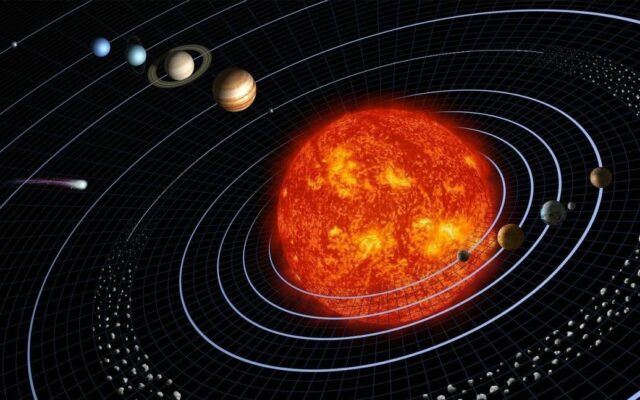The Mysterious Ninth Planet: A Cosmic Puzzle Yet to Be Solved
Imagine a hidden world lurking on the fringes of our Solar System, quietly influencing the paths of distant icy objects. Recent research suggests that this enigmatic ninth planet could be the key to understanding the strange orbits of these celestial bodies, situated hundreds of times further from the Sun than Earth. Scientists are utilizing advanced models to investigate this cosmic mystery, and the evidence is compelling.
Why Do We Think There’s a Ninth Planet?
The possibility of a ninth planet stems from the unusual behavior of several objects in the Kuiper Belt. These are the icy remnants from the early Solar System. For example, consider the orbit of an object nicknamed «Sedna,» which has a highly elliptical orbit that takes it far beyond the typical range of other known celestial bodies. Its trajectory seems to be influenced by a large, unseen mass. This observation leads scientists to propose that a massive planet could be lurking nearby, exerting gravitational forces that shape the orbits of these remote objects.
Building the Case: Growing Evidence
While some alternative theories exist—like the idea that these icy bodies are simply interacting with each other—the consensus is shifting. According to a recent analysis by astronomers, about 70% of these peculiar orbits could be explained by the gravitational pull of a ninth planet. This isn’t just speculation; it’s rooted in data collected from telescopes like the Subaru Telescope in Hawaii, which have tracked the movements of these distant objects with precision.
Think about it this way: If the existence of a ninth planet is confirmed, it would revolutionize our understanding of the Solar System. Just as the discovery of Uranus reshaped 19th-century astronomy and led to the eventual identification of Neptune due to gravitational influences, the ninth planet could unravel more secrets about the formation and dynamics of not only our Solar System but planetary systems across the galaxy.
Looking Ahead: The Search Continues
As researchers embark on this tantalizing quest, the astronomical community is abuzz with excitement about the potential implications of discovering a new world. Advanced telescopes and cutting-edge observational techniques are being employed to hunt for this elusive planet. For instance, astronomers are using the Atacama Large Millimeter/submillimeter Array (ALMA) in Chile, which boasts exceptional sensitivity to detect faint signals from distant objects.
- Statistical Insight: A recent survey of the Kuiper Belt found that the likelihood of a massive planet influencing these orbits is nearly 40% based on current models.
- Real-World Example: Just like detectives piecing together evidence from a crime scene, astronomers are meticulously analyzing data from multiple sources to build a comprehensive picture of our cosmic neighborhood.
- Expert Tip: If you’re fascinated by the cosmos, keep an eye on upcoming astronomical surveys. They may soon lead to groundbreaking discoveries!
The mystery of the ninth planet captivates both the scientific community and the public imagination alike. As we venture deeper into the cosmos, the prospect of unveiling a hidden world encourages all of us to ponder our place in this vast universe. Who knows? Perhaps one day soon, we’ll gaze at the stars and realize we’ve only just begun to scratch the surface of understanding our celestial home.





